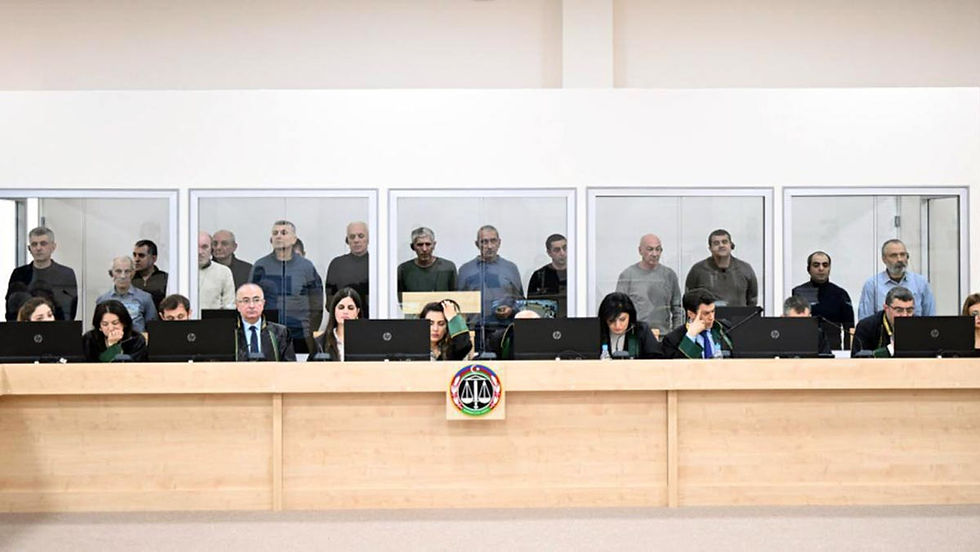Azerbaijan Destroys Historic Havelor Bridge in Occupied Hadrut, Artsakh
- The Armenian Report Team

- Jun 14, 2023
- 3 min read

Caucasus Heritage Watch (CHW) has reported the distressing destruction of the 1835 Havelor Bridge by Azerbaijanis – an invaluable piece of history that once spanned the Ishkhanaget River, located 2 kilometers southwest of Mets Tagher in the Hadrut region of Artsakh (Nagorno Karabakh).
CHW has been closely monitoring the condition of the Havelor Bridge since last summer, expressing deep concern over its deterioration. In October 2021, satellite images clearly showed the presence of the bridge. However, by July 2022, the bridge had become unrecognizable. In CHW's monitoring report #4, the bridge was provisionally designated as damaged. Unfortunately, April 2023 imagery now confirms that the bridge has been completely destroyed during roadwork activities.

The destruction of the Havelor Bridge marks a significant loss for the cultural heritage of the region. CHW states that the bridge was one of the six bridges built by Ishkhanaget, spanning across the river and its tributaries. Among those six, four bridges remain intact, making the loss of the Havelor Bridge all the more poignant.
The Havelor Bridge was not just a functional infrastructure; it was a symbol of architectural finesse and historical significance. With its single-arched, semi-cylindrical design, the bridge connected the areas of Mets Tagher and Tumi village over the river. It measured 20 meters in length, 3 meters in width, and stood 9 meters high, with an arch opening width of 9 meters.
An inscription engraved on a stone attached to the front of the bridge revealed its construction in 1835, honoring the memory of Haru/Til, the son of Gev, by the bridge builder. The inscription expressed wishes for blessings upon those who pass by.
What set the Havelor Bridge apart from others in its structure and position was its semi-fake construction protocol. This distinctive feature, along with its historical significance, made it a unique cultural landmark in Artsakh.
The construction of a new bridge in the vicinity, positioned approximately two meters lower than the previous Havelor Bridge, suggests a shift in infrastructure development. The new bridge is made of large and small fragments of quartz, held together by sturdy lime mortar.
The loss of the Havelor Bridge is a stark reminder of the need to protect and preserve cultural heritage in regions affected by conflict. The destruction of such an ancient and historically significant bridge raises concerns about the impact of roadworks and other developments on the cultural landmarks in the area.
Efforts to safeguard cultural heritage must be prioritized by all parties involved, especially in regions like Artsakh, where historical structures have withstood the test of time. The Havelor Bridge will be remembered for its rich history and the role it played in connecting communities, and its destruction serves as a call to action to protect the remaining cultural treasures in Artsakh.
Background:
In September 2020, Azerbaijan unleashed an unprovoked war in Artsakh, resulting in a devastating conflict with Armenia. The war saw intense fighting and territorial disputes in the region, and it has left a lasting impact on the communities and cultural heritage in the area.
Currently, the historically Armenian region of Hadrut in Artsakh remains under Azerbaijan's occupation. This has raised concerns about the preservation of the region's cultural heritage and landmarks, including the recent destruction of the 1835 Havelor Bridge.
The occupation has introduced new challenges for the protection of historical sites and has heightened worries about potential harm to other cultural landmarks in the area. The destruction of the Havelor Bridge highlights the vulnerability of such structures during times of conflict and points to the need for heightened measures to safeguard the region's rich history.
As the situation in Artsakh continues to evolve, the international community calls for respect for cultural heritage and efforts to prevent further loss and damage to historically significant sites. The international community remains committed to finding a peaceful resolution to the conflict and working towards the preservation of Artsakh's cultural legacy for future generations.






Comments